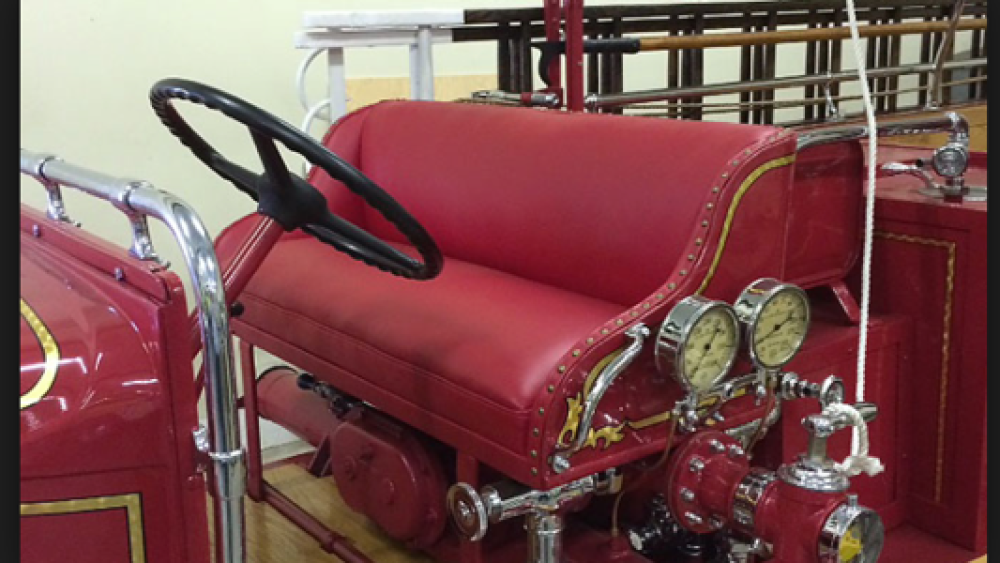The seats on fire apparatus are more than just a place for firefighters to sit while responding to emergency calls. They are also an integral part of the crash protection features of modern fire apparatus along with occupant restraint belt systems and airbags.
That’s why fire departments should give careful consideration when specifying the seats for new fire apparatus.
NFPA 1901: Standard for Automotive Fire Apparatus states the following three criteria regarding seats on fire apparatus in Chapter 14, Driving and Crew Area.
- Each crew riding position shall be within a fully enclosed personnel area.
- A label that states the number of personnel the vehicle is designed to carry shall be located in an area visible to the driver.
- Each crew riding position shall be provided with a seat and an approved seat belt designed to accommodate a person with and without heavy clothing.
NFPA 1901 goes on to specify that each seating space shall have a minimum of 22 inches (560 mm) at the shoulder level. Seat cushions shall be a minimum of 18 inches (460 mm) in width and 15 inches (380 mm) from the front of the cushion to the face of the seat back. A back cushion shall be provided that extends from the face of the seat vertically at least 18 inches and that is a minimum of 18 inches wide at the base.
The back cushion can be split to accommodate a fully recessed SCBA and bracket. Where the back cushion in split to accommodate SCBA, a headrest must be supplied.
Look for seats that are certified to comply with 49 CFR Part 571—Federal Motor Vehicle Safety Standards as well as NFPA 1901.
Driver seats
Mechanical or air-suspension seats and the comfortable ride they provide have been a welcome piece of truck equipment for over-the-road trucker drivers who spend hours daily behind the wheel.
Unlike those drivers, who drive hundreds of miles per day over interstate highways, a driver of fire apparatus encounters rapid braking and making multiple turns during emergency responses.
Mechanical or air-suspension seats can cause the fire apparatus driver to bounce up and down and can pose problems maintaining control of the vehicle. Emergency vehicle instructors advise that the driver’s seat on fire apparatus should either be a fixed floor-mounted seat or that the mechanical or air-suspension seat should be locked in position.
The Sierra bucket seat from H.O. Bostrom is suited for on- or off-highway applications. The Sierra is available in many variations and can be combined with Bostrom’s fixed and adjustable pedestals/risers or mechanical/air suspensions. Integral serpentine springs help isolate shock and built-in or adjustable lumbar support improves comfort.
It is available in high or low back with optional back recline, five-inch fore and aft adjustment and flip-up armrests. It also comes in vinyl, or Durawear trims with optional custom corporate logo.
The universal six-way electric seat from Seats Incorporated has standard features that include six directions of adjustment (fore, aft, up, down, front and rear tilt), two-way lumbar support, 15-degree recline and molded contour foam.
Optional features include seat occupant sensor, six-way directional adjustment with four programmable memory positions and six-way directional adjustment with heavy-duty, low-profile air-ride suspension.
Crew seats
Crew seats for many fire departments include having the SCBA unit integrated with the seat so that the firefighter can don their SCBA unit prior to exiting the apparatus at the scene. Fire department leaders who create fire apparatus specifications should ensure that the selected seat has been properly designed to accommodate this task while still doing its primary job of protecting the occupant.
Another desirable feature is a seat that has a flip-up seat cushion that automatically swings up out of the way when the seat is unoccupied to provide more room in the crew area.
Crew seats can be either floor-mounted or wall-mounted in the crew cab area. Bostrom’s Tanker Series (500, 400 and 300) of floor mounted crew seats that can accommodate SCBA and mounting bracket.
The Res-Q-Back 350 from Bostrom is a wall-mounted seat that includes an “auto pivot and return” padded headrest that facilitates rapid egress from seat with donned turnout gear and SCBA.
Bostrom’s SecureAll SCBA locking system is the product of a firefighter-inspired design applied practically for the safe and secure storage of the SCBA unit in conjunction with any of Bostrom’s split seats.
The Battalion Series from Seats Incorporated has a number of crew seating options including SCBA seats and crew seats with flip-up cushions. Seats Incorporated’s proprietary SmartDock hands-free SCBA holder is available as an option.
The SmartDock is a strap-free docking system station that offers single-motion SCBA insertion and hands-free release when the firefighter rises out of the seat. In the event of a collision, the top claws lock from inertial forces for a secure hold, preventing the cylinder from becoming a projectile. One model fits more than 85 percent of SCBAs on the market today.













